Previous – 9. Picking Up The Pieces | Contents | Next – 11. Tales From The Heart
We’re honored to be able to publish Stan Taylor’s Kirby biography here in the state he sent it to us, with only the slightest bit of editing. – Rand Hoppe
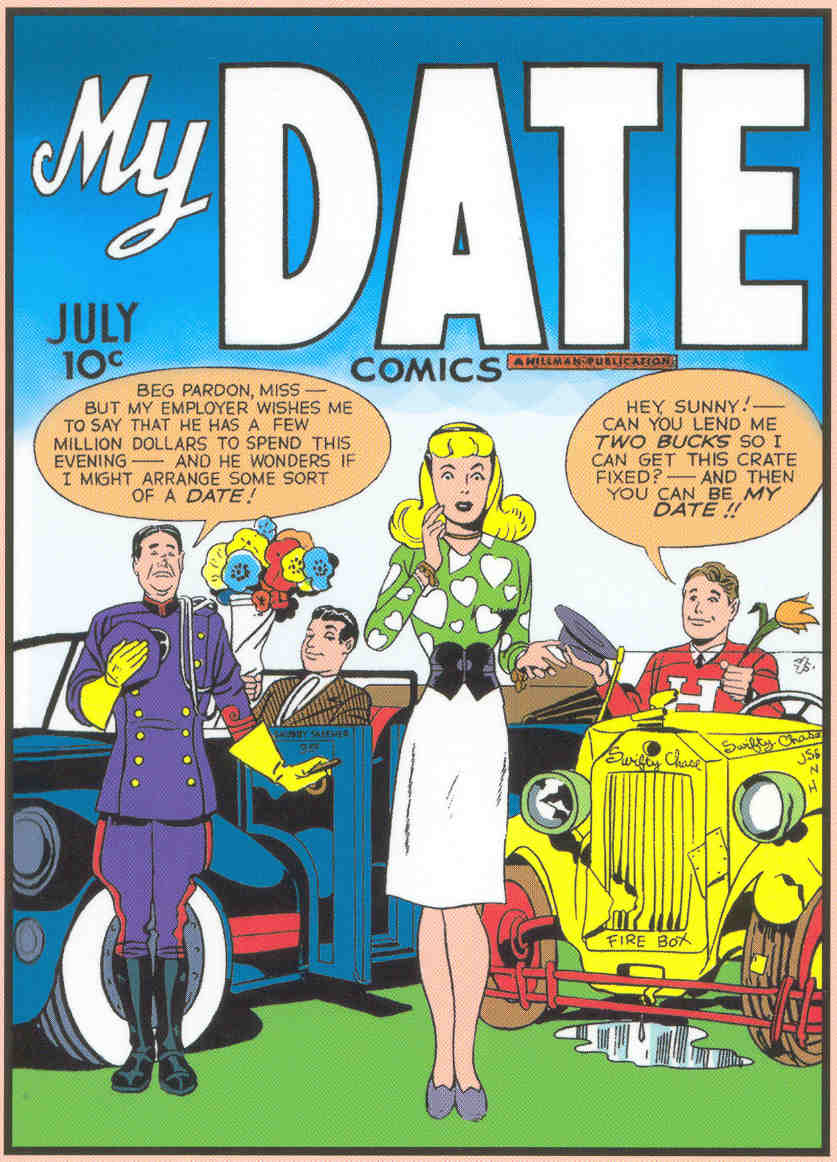
An age old question
THE GIRLS TAKE OVER
America was changing. The war changed everything. Much like the old post World War 1 song “How You Gonna Keep ‘em Down on The Farm” post WW2 soldiers weren’t ready to return to pre-WW2 America. The far reaching GI Bill meant that many soldiers would return to school, open their own businesses, and move out of the city. In early 1947, Abraham Levitt and his sons began work on Levittown, a small tract just east of New York, in Long Island. Levittown was the first truly mass-produced suburb and is widely regarded as the archetype for postwar developments throughout the country.
This wasn’t happenstance, the Levitts had planned for just this moment. In perhaps the clearest example of monopoly the Levitts owned the forest where the lumber was forested, the mill in Oregon where the lumber was manufactured, made their own nails, and cement, and prefabricated the structures used to construct homes. In addition, they controlled prices for appliances by purchasing directly from the manufacturers. Well paid, but non-union labor also aided in the construction of the homes. Production was broken down into twenty-seven discrete steps, which at one point enabled the Levitts to construct a house in a matter of minutes. Once the houses were constructed the Levitts added baseball fields, swimming pools, shopping centers, schools, parks, and churches to their neighborhoods. The Levitts remained the largest home builders in the United States throughout much of the 1950s, and initiated a trend towards rapid suburbanization that continues today
America grew up; more tolerant and more curious. Their world expanded. Though two-piece bathing suits had been around,(especially in comics) a French designer shrunk down the garment below the navel, and barely covering the breasts, and named it the “bikini”. Taking the name of the American atomic testing atoll he described the reaction of men to this small clothing accessory-explosive. The bikini became a major hit.

Never underestimate your audience
Concurrently, movies were changing; TV had come along and replaced it as the arbiter of entertainment and cultural tastes. In many ways the movies became more adult oriented, or simply turned inward; with stories of lewd and deviant behavior. During the postwar period Hollywood produced a growing number addressing such problems as ethnic and racial prejudice, anti-semitism, juvenile delinquency, authoritarian distrust, suffering of maltreated mental patients, and the problems of alcohol and drug addiction. Think Gentlemen’s Agreement, Rebel Without a Cause, Asphalt Jungle, and Psycho. These films depicted sexual frustration; anxious parents; paranoia, alienated children; defiant adolescents, and loveless marriages. It was a far cry from the soothing and funny fare available on TV.
Hollywood found that it was losing market share as other countries placed high tariffs on American goods in order to improve its own products. Hollywood had depended on overseas markets for as much as 40 percent of its revenue. But in an effort to nurture their own film industries and prevent an excessive outflow of dollars, Britain, France, and Italy imposed stiff import tariffs and restrictive quotas on imported American movies.
Worse, as tastes were changing the whole paradigm of movie-making altered when an anti-trust ruling separated the manufacturer from theater chains. In 1948, the United States Supreme Court handed down its decision in the Paramount case, which had been working its ways through the courts for almost a decade. The court’s decree called for the major studios to divest themselves of their theater chains. In addition to separating theater and producer- distributor companies, the court also outlawed block booking, the fixing of admissions prices, unfair runs and clearances, and discriminatory pricing and purchasing arrangements. With this decision, the industry the moguls built–the vertically integrated studio–died. If the loss of foreign revenues shook the financial foundation of the industry, the end of block booking (a practice whereby the exhibitor is forced to take all of a company’s pictures to get any of that company’s pictures) shattered the weakened buttress. Film making had become a real crap shoot. In many ways, comics mirrored all of these problems.
One unexpected change was the rise of the independent film-makers as they now had a chance to get their product to market. The majors tried to use gimmicks and technology to brake the fall. Theaters were filled with 3-D, Cinerama, stereophonic sound, smell-a-rama, and cinemascope–attendance continued to fall. The foreign films shocked and amazed the American audiences with adult themes, and characters not allowed by the stuffy Hays Committee guidelines.
France’s Brigit Bardot single-handedly made the bikini acceptable-at least to all red-blooded men. Italy’s Sophia Loren brought an earthy passion, and organic quality not found in Hollywood’s prissiness, and prudishness. Hollywood gave us Doris Day.



Not a fair fight- did Doris Day have a bellybutton?
Politically, Hollywood also suffered from Congressional probes of communist influence in the film industry. In the late 1930s, the House of Representatives established the Un-American Activities Committee (HUAC) to combat subversive right-wing and left-wing movements. Its history was less than distinguished. From the first it tended to see subversive Communists everywhere at work in American society. HUAC even announced that the Boy Scouts were Communist infiltrated. During the late 1940s and early 1950s HUAC picked up the tempo of its investigation, which it conducted in well-publicized sessions. Twice during this period HUAC traveled to Hollywood to investigate Communist infiltration in the film industry.
HUAC first went to Hollywood in 1947. Although it didn’t find the party line preached in the movies, it did call a group of radical screenwriters and producers into its sessions to testify. Asked if they were Communists, the “Hollywood Ten” refused to answer questions about their political beliefs. As Ring Lardner, Jr., one of the ten, said, “I could answer…but if I did, I would hate myself in the morning.” They believed that the First Amendment protected them. In the politically charged late 1940s, however, their rights were not protected. Those who refused to divulge their political affiliations were tried for contempt of Congress, sent to prison for a year, and blacklisted. Congress had found a way around the personal protections provided by the Constitution by pressuring the industry to control its employees.
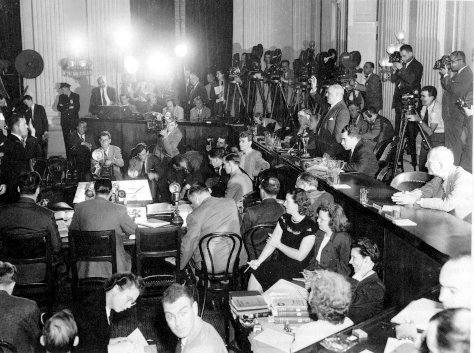
America’s three ring circus
HUAC went back to Hollywood in 1951. This time it called hundreds of witnesses from both the political right and the political left. Conservatives told HUAC that Hollywood was littered with “Commies.” Walt Disney even recounted attempts to have Mickey Mouse follow the party line. Of the radicals, some talked but most didn’t. To cooperate with HUAC entailed “naming names”–that is, informing on one’s friends and political acquaintances. Again, those who refused to name names found themselves unemployed and unemployable. All told, about 250 directors, writers, and actors were black listed.
In response to Gentleman’s Agreement — a movie about anti-semitism, winning the best picture Oscar, Congress subpoenaed its cast. I assume Jew was the same as Communist. It seems HUAC was upset by the picture’s theme. The House Un-American Activities Committee, called Elia Kazan, Darryl Zanuck, John Garfield, and Anne Revere to testify before the committee. Revere refused to testify outright and although Garfield appeared, he refused to “name names”. Both were placed in the Red Channels of the Hollywood Blacklist. Due to the blacklist, Garfield went back to Broadway for work. Several members of the Group acting theater were named by Clifford Odets as Communists. They were all blacklisted. The stress was incredible and in late 1951, two of the accused Mady Christians and J. Edward Bromberg died as a result. A year before, a young black actor named Canada Lee was hauled before the Committee. The Committee was trying to force Lee to testify against Paul Robeson, and the fight against apartheid. Garfield had worked with Canada in Body and Soul. So harried was Canada Lee, that he suffered a heart attack and died in May,1952. Garfield remained on the blacklist for one year. He was called again to testify against his wife. Despondent over his deteriorating marriage, and fearful over his fading career, Garfield agreed to testify. After a strenuous afternoon of sports, Garfield fell ill and died of a heart attack at the age of 39 two weeks after his friend, just before his second hearing date.


Anti-Semitism becomes Communistic – born Julius Garfinkel near Jacob
One writer brought before the committee was screenwriter Roy Huggins; who had been an avowed anti-Fascist while in school. He reluctantly acknowledged that several others had been fellow communists in a long defunct branch. HUAC already had the names and he simply agreed with them. Due to his testimony, he was allowed to continue his work, but not before leaving them with one last blast.
“There is a great need for democracy to do something about the subversive drives which intend to overthrow it. This is one of the things that disturbed me deeply about the Communist Party, is that they do not believe in individual freedom, and yet they shout to the housetops in defense of individual freedom in all of the democratic countries in which they exist. They become champions of complete political freedom. It seems to be one more evidence of their complete lack of integrity or scrupulous or anything else.
It would be a terrible thing if we were to fight tyranny by becoming a tyranny ourselves, isn’t that so. This would be a terrible thing if we are anti-Communist because we feel that Communists destroy individual freedom and liberty, and in fighting Communism, we destroy individual freedom and liberty. This would be a fight in vain.”
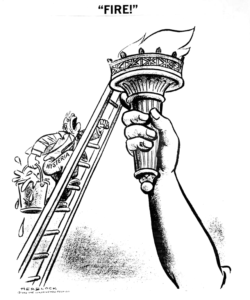
Herblock takes on the hysteria
Sports were changing too. In 1946 football broke its color line when Kenny Washington and Woody Strode joined the new Los Angeles Rams when part of the new charter stated that the team must be integrated. Oddly football had originally been desegregated, and it wasn’t until 1933 that it became all-white in order to reach the newfound southern market. In fact, Paul Robeson, noted singer, actor, and civil rights leader played in the NFL in the 1920’s. Kenny and Woody had made themselves folk heroes with their exploits at nearby UCLA. They were a natural move for the new team. A third black member of UCLA’s black backfield had a different path to glory. He was a four letter man who chose baseball as his future. He found it the next year, 3000 miles further east.
Just a few miles from the Kirby’s Brooklyn house Mr. Branch Rickey’s Noble Experiment came to fruition when, on April 15, 1947, Jackie Robinson, after a stellar one-year minor league stop, the falsely accused Black Panther tank crewman, took his place at first base in Ebbett’s Field as the Brooklyn Dodgers new infielder. Robinson broke the decades old color line and his instrumental move ignited the Civil Rights Movement. Robinson had first come to the public attention as a footballer at the University of Calif. at Los Angeles and then as an officer in the military. Rickey searched far and wide for just the right candidate to make the leap- talented, personable and a strong will to take the abuse. A score more joined very soon after. Imagine baseball without Roy Campanella, Willie Mays, Hank Aaron, or Frank Robinson. Unfortunately it happened too late for Josh Gibson or a prime Satchel Paige.
Jackie Robinson succeeded in putting the prejudice and racial strife aside, and showed everyone what a talent he was. In his first year, he hit 12 home runs and helped the Dodgers win the National League pennant. That year, Robinson led the National League in stolen bases and was selected as Rookie of the Year. He continued to wow fans and critics alike with impressive feats, such as an outstanding .342 batting average during the 1949 season. He led in stolen bases that year and earned the National League’s Most Valuable Player Award. Roy Campanella, perhaps the best catcher ever, joined in 1948. In 1955, they led “dem bums” to their first World Series win.
Neal Kirby told an interviewer that as a child, Jack’s war times were not spoken of; “But, as I mentioned, I didn’t hear any of his war stories until I was older. Perhaps he thought I was too young, or more likely, the painful memories were still too fresh. Besides, we had plenty to talk about with the Brooklyn Dodgers and boxing.” Jack loved “dem bums” and baseball in particular. “I’m not a Mantle (Mickey) fan but I know about him, and I know people talk about him so I know something about him that made him distinctive. In my day it was Lou Gehrig, Babe Ruth and Satchel Paige, who were really great and as good as any ballplayer I ever heard of. These men were distinctive; they had something and whatever they did in the game, they did as personalities.” Of course he downplayed Mickey Mantle, the Yankee great was one of the great Brooklyn Dodger killers of the time. In 1955, when the Dodgers finally won the World Series, one writer made it very clear. “There are times when a valid reason exists to explain an event. The Brooklyn Dodgers won their only World Championship in 1955 because Mickey Mantle was hurt.”
He had the right stuff – The paper says flying saucer
On a small ranch near Roswell, New Mexico, on July 8, 1947 the Air Force announced that military personnel had recovered a crashed “flying disc”, setting off the UFO phenomenon in the U.S. A day later the Air Force changed their story and said they recovered a weather balloon, not a flying disc. This followed closely on the heels of UFO reports in Maury Island, Washington, and Mt. Rainier.
Soon, rumors of alien bodies, secret government installations, and official cover-up arose. These incidents ignited the cottage industry of conspiracy theorist that look for secret cabals, hidden government agencies, and powerful interests behind every action of the government, or political tragedy. Jack loved the various interpretations and theories behind the visitation of alien beings and they soon became a central theme in his cosmic tales.
Jack never asked anyone to believe him, but he told people that he had seen mysterious lights flying in formation that suddenly shot out and vanished.
TV was becoming a major source for child entertainment as more and more markets started supplying morning and afternoon kiddie fare that captured the school aged demographic. In 1947, Kukla, Fran and Ollie, Howdy Doody, and Bozo the Clown became phenoms and Disney soon followed. The later both soon appeared in comic books. The TV genre became an accepted competitor and source for the market.
The comic book industry also had changed; the return of the soldiers to jobs and families robbed the industry of an audience, and a natural focus. The pulp magazine market was on its last leg. No longer did the comic publishers have that captive military audience. In fact, a new medium would pop up to grab that more mature audience. Paperback publishers had been around since the late 30’s, using their cheap format to bring books to the masses,- mostly with reprints of classics, and entertainment books like crosswords, and puzzles. In 1945, Fawcett, the comic publisher acquired a distribution company. It expanded by adding two paperback book publishers-with the agreement not to publish their reprints in book form. To get around this proviso, Roscoe Fawcett contracted out for original product to publish and distribute. Joe Gill, the prolific comic writer for Charlton Comics mentioned this new avenue to his friend and fellow comic writer Mickey Spillane who had been fooling around with a new character. Spillane was a young man who joined the comic industry just after his time in the service. He became known for being fast and dynamic. 19 days later Spillane had a manuscript, and paperbacks would get a character. Mickey tells about how his new job came about to interviewer Michael Carlson.
“Now at that time you had to go through hardback. So I wrote I, the Jury and turned it in to E. P. Dutton. It had been rejected by four different publishers, saying no, no, this is too violent, too dirty … and it was picked up by Roscoe Fawcett, Fawcett Publications. He was a distributor, doing comic books, but he saw the potential, and he went to New American Library, which was Signet Books, and he said “If you print this book, I’ll distribute it.” Now they can’t get distribution, so they go to Dutton and say “if you print this, we’ll do the paperback”. So now it’s win-win-win, and they offer me $250, and I say no, I need a thousand dollars to build a house in Newburgh, so I get a $1,000 advance, which was unheard of. So Roscoe ordered a million copies, and that was unheard of! So somebody in his outfit says, oh, that wasn’t what he meant, he must’ve meant a quarter million. So they bring out a quarter of a million at the wrong time, cause books sell great at Christmas time, but my book came out between Christmas and New Year, which is death, and it went straight to the top, because it was word of mouth, and it’s sold out, and Fawcett says get the rest of them out, and the guy says there aren’t any more and Roscoe says “whaddaya mean, I ordered a million, and a guy got fired!”
Mickey Spillane’s “I The Jury” starring detective Mike Hammer, became the first breakout hit for the nascent paperback market. Further print sales soon topped 6 million copies. Like with Superman, the new genre had a superstar writer and character. More important, the publisher had sales numbers not seen in several years in the comic business. Bruno Fischer’s House of Flesh sold 1,800,212 copies. In 1951, Charles Williams’ Hill Girl sold 1,226,890 copies, Gil Brewer’s 13 French Street sold 1,200,365 and Cassidy’s Girl by David Goodis sold 1,036,497.[12] Authors were attracted to Gold Medal because royalties were based on print runs rather than actual sales, and they received the entire royalty instead of a 50-50 split with a hardback publisher. Gold Medal paid a $2000 advance on an initial print run for 200,000 copies. When a print run increased to 300,000, the advance was $3000. This new payment concept attracted many writers from the pulp and comic tradition never to return. The covers continued the same salacious nature of the pulps, unlike pulps, there were no illustrations in the text portion.
Ralph Deigh the first editor recalls; “From our entrance into the paperback business, we paid authors at a more generous rate than had been the custom. In 1955, when we started the Crest line to reprint hardcover books, we extended this practice to what we offered for soft cover rights. It caused quite a sensation in the trade when we paid $101,505 for James Gould Cozzen’ By Love Possessed and later $700,000 for James A. Michener’s The Source. Giving the author a bigger share of the pie paid off handsomely.”
Spillane would go on to great fame, and never returned to comics. Paperbacks would soon expand and cover all the older pulp genres such as sci-fi, westerns, and the romance titles. Lack of any censorship allowed for a whole new level of adult reading material.
Paperback books were a new option for the lurid pulp and magazine publishers and soon all the major comic book publishers had added this new division. Paperback books added a new more salacious entry into the marketplace. The smaller size gave the retailers more buck for the footage. Racks were developed to minimize space to a minimum. From the beginning of the paperback revolution, the paperback rack has been as ubiquitous a fixture as the books themselves. These racks, placed in everyday locations such as drugstores, department stores, newsstands, candy stores and train stations were instrumental in bringing literature directly to the people.


Paperback girls didn’t wear many clothes – Higher pricepoint for publishers and retailers
According to Paperback Originals by Ben Crider;
“World War II brought both new technology and a wide readership of men and women now in the military or employed as shift workers; paperbacks were cheap, readily available, and easily carried. Furthermore, people found that restrictions on travel brought them more time to read more paperbacks. Four color printing and lamination developed for military maps made the paperback cover eye catching and kept ink from running as people would examine the cover of the book.


Salacious meant protruding heaving breasts — pulps in a more convenient package
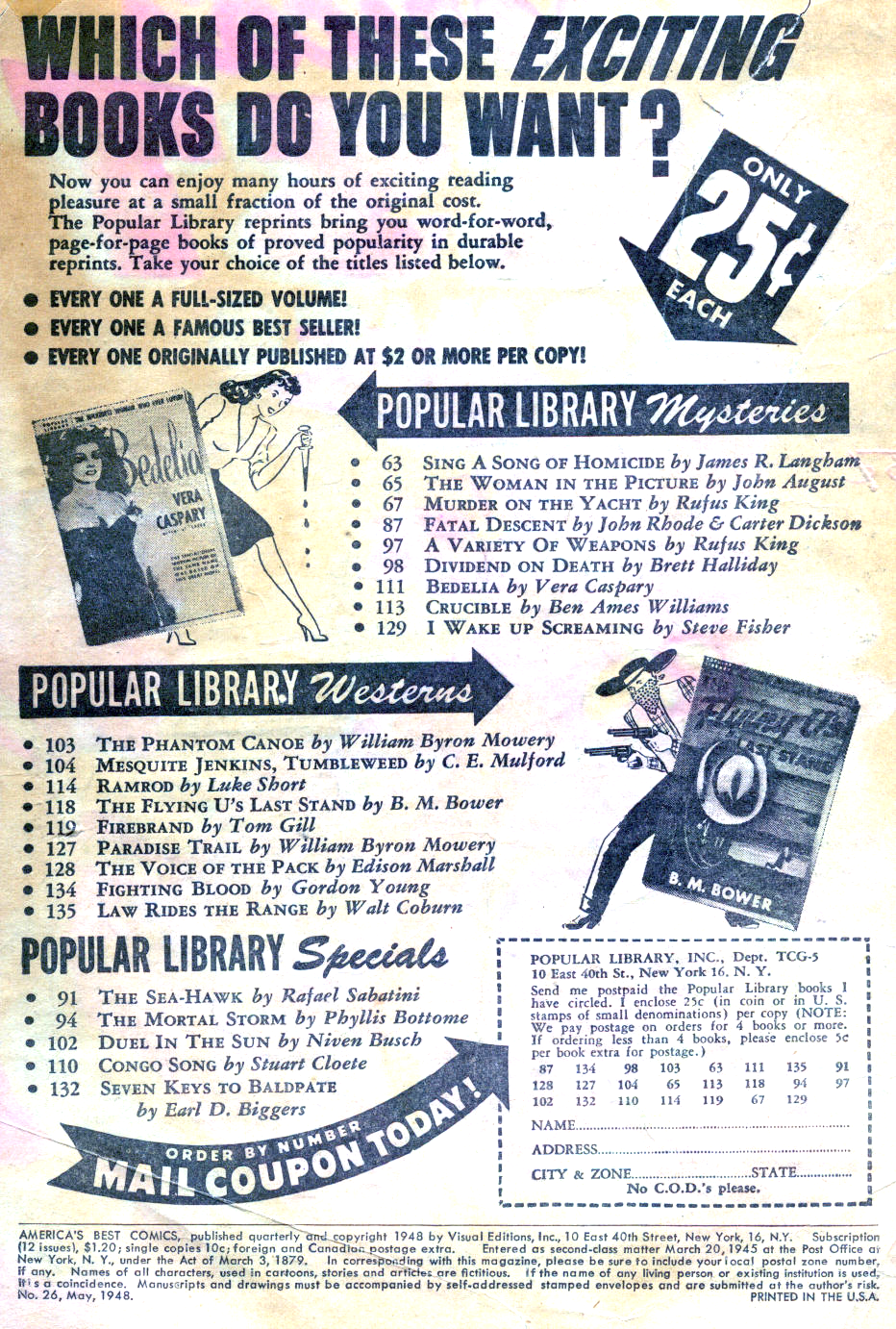
Comics even advertised paperback books as owners tried to regain market share
It’s been reported that over 17 million paperbacks were sold in 1947 alone. The comic book industry would have to fight and earn a new audience. The publishers didn’t care because they simply swallowed up this new market. Just as the change from pulps to comics showed an evolution by the publishers, the change from comics and pulps to paperbacks likewise showed the publishers evolving. The audience for the disposable entertainment income of children and adults was diluted by newer technologies and more diverse products. Joe Simon had stabilized their immediate situation, now was the time for the boys to once again innovate and make a difference.
Confessional soap style romance stories had been a part of every other medium for a long time. Mills and Boon, a longtime fiction publisher, became a strictly romance publisher of hardcover books in the 1930’s. A little factoid; One distinctive feature of both Mills & Boon and Harlequin (in the US) is the length of time their books are available to buy. They publish a set number of books each month which are sent to subscribers and displayed on stands in bookshops. At the end of the month, any unsold copies in the shops are withdrawn and returned to be destroyed. Titles are available to buy direct from Mills & Boon for 3 months or until they are sold out, whichever is sooner. Again, any remaining books are disposed of. Fans looking for particular books after this time must find them second-hand. Not unlike the comic book market; which by this time was building a large second-hand system? Street and Smith published the first pulp romance title in 1921 with Love Story. The pulps had dozens of romance titles by the ‘40s. Bernarr Macfadden published the slick magazine True Romances to great success in 1926. Radio soap operas were very popular by the 1920’s with titles like The Romance of Helen Trent, Our Gal Sunday and The Guiding Light entertaining the female market. Even the newspaper strips fished for the ladies with strips like Mary Worth and Brenda Starr.
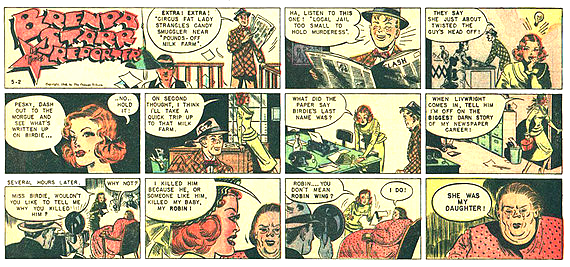
The only reason romance wasn’t introduced to the comic book market earlier is because there was no need. The publishers were selling out anything they printed. It seemed an endless market devouring any and all super hero title published. So why experiment and fool with success? Then with the paper restriction during the war there was no extra paper to try new genres. The teen romance books like Archie certainly had a large audience. There was no reason not to believe that comic books couldn’t do straight romance stories.


Strange reprint one-shot by Vin Sullivan — the real deal by the big dogs
In his book, Joe says that the idea first took hold while he was in the service. “It had long been a source of wonder to me that so many adults were reading comic books designed for children, and now I was finding myself increasingly wondering why there was such a dearth of comic book material for the female population. Women factory workers, housemaids, housewives, and teen-age girls were settling for Donald Duck, Mickey Mouse and the adventure books. I wondered how they would accept a comic book version of the popular True Story Magazine, with youthful, emotional, yet wholesome stories supposedly told in the first person by love-smitten teenagers.” Jack said “The romance genre was all around us. There were love-story pulps, and there were love story sections in the newspapers. There were love stories in the movies. Wherever you went there were love stories. That’s how we got our new material, and it suddenly struck me that that’s what we haven’t done. We haven’t done romance stories! So Joe and I sat down one night and came up with the title Young Romance and Young Romance sold out!”



Most likely Joe worked up a dummy cover titled Young Romance and took it over to Jack Kirby. Despite being the preeminent penciler of the bombastic art of the superhero genre, Kirby immediately understood the possibilities. The concept was so powerful that Joe immediately thought of reforming the studio, and self publishing. As Joe described his plans Jack was hesitant “At this time? It’s too much of a gamble; let’s get someone else to publish it!” Jack’s wariness won out and put the brakes on that idea, but Joe was so confident that he decided to push to keep the copyrights himself, and get a publisher to front the money. Joe, Jack and Bill Draut prepared the stories for the first issue and put together a finished presentation to show to prospective publishers.
It was always Joe Simon’s advice to have a complete visual item to show editors, so that it would be impossible for them make changes or to steal the concept for themselves.
At Crestwood, Editor Maurice Rosenfield expressed an interest and when he asked Joe what he wanted for the idea, Joe told him “50% of the profits!” Maurice called in the owners Mike Blier and Teddy Epstein and an arrangement was worked out. Rosenfield was given a 5% fee for brokering the deal. Crestwood would publish Young Romance under their Prize imprint. Probably the smartest decision Crestwood ever made. As part of the deal, to ease Crestwood’s fears S&K would also produce a companion crime title to Headline Comics, which was really showing good sales. Young Romance #1 hit the stands with a Sept 1947 date, sporting a unique first. In the indicia it shows as copyright holders Joe Simon and Jack Kirby, the first time the artists had been listed as such. Justice Traps the Guilty #1 followed a month later in Oct. 1947.
![]()
The cover to YR #1 was another Kirby classic. It featured a young girl walking in unaware as her artist fiancé is fending off the romantic advances of the girl’s older sister. The older sister was drawn with a low cut cleavage baring blouse and a hi-cut slit to there dress. The overt sexuality was obvious. The cover featured a subtitle–DESIGNED FOR THE MORE ADULT READERS OF COMICS, plus a smaller blurb promising ALL TRUE LOVE STORIES. This wasn’t Archie and Veronica. Prize’s in-house ads highlighted the new book as “It’s here at last!!! The new, more adult comic magazine you’ve been waiting for. Chock full of romantic true love stories that will make your blood tingle…and your heart beat faster!!! Pictured in vivid, moving drawings that will come to life before your eyes” The cover was prime S&K, full of their symbolic halos, arches, snaky shadows, and good vs. bad fashions.
Joe explained; “Young Romance consisted of confession stories told by teenage girls, illustrated in comic book format, with speech balloons and captions longer than commonly used in adventure comic books. It offered more reading material and less art Each romance “confessor” was typically plagued by guilt for such acts as falling in love with a delinquent or kissing an older man of, perhaps 25. All stories ended happily however with the girls thoroughly cleansed of “sins” The first issue of Young Romance was cover-dated September-October 1947.
Richard Howell claims the title sold 92% of its print run. With the third issue, Crestwood increased the print run to triple the initial number of copies. Circulation jumped to 1,000,000 copies per month. Initially published bimonthly, Young Romance quickly became a monthly and generated the spin-off, Young Love — together the two sold two million copies a month. Kirby noted the books “made millions.” For collectors there is a conundrum. These were the largest read, but the least collected. They were read and thrown away. So collecting old copies is hard.


Love that hair
The confessional and racier nature of the stories was spotlighted with the very first story; I was a Pick-up. The comic also featured helpful advice and short morality vignettes. Bill Draut also provided one of the stranger back-up tales where every panel was framed by the insides of the main characters eyes. Creepily, it took eyewitness account just a little too far!
The response to YR was immediate; it sold out its initial print run; some have said as high as 92%. The word of mouth was incredible as young girls flocked to the stands for a copy. Joe says that he was rushing Harriet to the hospital to deliver Jon when he stopped into a store to get her something to read. He noticed a group of girls standing around the comic rack looking and squealing over a magazine. When Joe looked closer he saw that it was Young Romance they were all atwitter about. Take it with a grain of salt, Joe’s son Jon was born months before YR hit the stands. You know you hit the jackpot when a rival publisher badmouths your book. Martin Goodman the owner of Atlas Comics (nee Timely) wrote a letter to Harry Donenfeld, the owner of DC Comics. Crestwood’s books were distributed by Independent News, a division of DC Comics. Goodman complained about Young Romance. “It borders on pornography; it will do irreparable harm to the field”. This was petty and ridiculous as Goodman’s pulp division had been printing racy romance pulps for years without incident. Martin soon followed it up with the first copycat title.
The idea that there could be blow back due to a comic’s content wasn’t completely irrational. In the early 1900’s, during the heyday of the fifty-cent juveniles (the serialized juvenile books such as Tom Swift, Nancy Drew, and The Motor Boys) there was an organized sector calling for their ouster. Fortune Magazine noted that the juvenile series books lacked any literary value. “The fifty-cent juvenile is, precisely, a book for boys and girls between the age of ten and sixteen. It has few literary pretensions; it is a flat-footed account of the superhuman exploits of adolescent Ubermenschen- and if it is successful it may have sequels that ramble on for as many as thirty-six volumes. It is a fortuitous cross between compound interest and perpetual motion. The Rover Boys is its quintessence; a substantial profit for author and publisher is its only and unblushing purpose.” (Imagine how incensed this author had to be to portray profit for a company as a negative aspect in Fortune Magazine!) Anthony Comstock, the famous American bluenose of the time railed against those most harmless of titles, as well as their predecessors the penny dreadfuls, and the dime novels, in his book Traps For The Young. “Satan adopts…devices to capture our youth and secure the ruin of immortal souls. Of this class the love story and cheap work of fiction captivate fancy and pervert taste. They defraud the future man or woman by capturing and enslaving the young imagination. The wild fancies and exaggerations of the unreal in the story supplant aspirations for that which ennobles and exalts.” Series books were considered to “cause ‘mental laziness,’ induce a ‘fatal sluggishness,’ and ‘intellectual torpor.'”


DC fights back rare – reprint oddity from 1948 w/Boy Commandos
Franklin K. Mathiews, the official librarian of the Boy Scouts made his disdain for Edward Stratemeyer’s juvenile title empire into a crusade, saying the books overexcite young minds “A child intoxicated with Tom Swift would be not only intolerable but permanently warped by an over stimulated imagination.” He wrote an article stating that Stratemeyer’s series books were the same as letting a child “blow out their brains.” In Newark, the series books were banned from the public libraries.
If those most cherished of juvenile books such as Nancy Drew and the Hardy Boys faced a crusade, then comics, with their garish base nature and even fewer nods to literary pretension certainly brought out the bile in those easily incensed. “For years–even during the war–when comics were considered a patriotic staple there had been a segment of the population complaining about comics harm to the morals of the young kids addicted to them. Sterling North, of the Chicago Daily News in 1940 once called them “Badly drawn, badly written, and badly printed – a strain on the young eyes and young nervous systems – the effects of these pulp-paper nightmares is child’s natural sense of colour; their hypodermic injection of sex and murder make them that of a violent stimulant. Their crude blacks and reds spoils a child impatient with better, though quieter, stories. Unless we want a coming generation even more ferocious than the present one, parents and teachers throughout America must band together to break the `comic’ magazine.” Saturday Evening Post, Reader’s Digest and other “family” oriented mags printed similar diatribes about the growing concern between comics and youthful bad behavior.
Just the year before the General Federation of Women forced several companies to self-censor, and when more didn’t follow, they went to government agencies to move their agenda.


Politician mixing comics and nudie mags together – Anthony “bluenose” Comstock
Just a month or so earlier a New York newsstand owner was arrested for selling a detective magazine considered obscene. A direct result of Anthony Comstock’s imposed legal censorship. The magazine was published by Alex Hillman, the owner and publisher of the Hillman comic line that published S&K’s My Date comic. Martin Goodman’s concern was misguided as to romance comics, but would be prescient when years later a public outcry over risqué, tawdry and scandalous content almost ended the comic industry.
At first there were local newspaper stories about how ‘bad’ comic books were and the negative effects they had on children. Then in February 1947 Marya Mannes wrote an article critical of comics in the New Republic magazine. In March of 1948 ABC radio did a program called ‘What’s Wrong with Comics?’ and it to criticized unwholesome comics. Marya Mannes, Al Capp and Publisher Magazine’s George Hecht were among the debaters. The show created massive response of 6,000 letters, a record for ABC at the time. Reporting on the program appeared soon afterwards in Newsweek and Saturday Review of Literature.
In 1950, behind the scenes, a demand sent shivers through the industry. On Aug 5 1950 The Kefauver Committee surveyed all the top comic book companies asking for circulation figures, demographics, income, opinions about juvenile delinquency and whether or not their books have been approved by psychiatrists. This was getting serious.
Being proactive Donenfeld did ask the boys to tone down the more salacious elements by removing the blurb “Designed for the more adult readers of comics” from the covers. In 1951, the legislature of New York, published the reports of a two year study looking at the comic industry. It produced a ten point finding that lambasted the comic publishers and proposed changes.
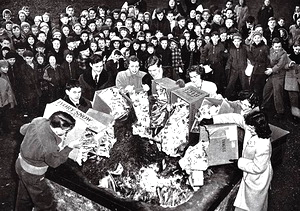
burning up a college education
Young Romance quickly shot to the top of the sales chart. The boys were back on top. Comic sales had stabilized after the end of the war to around 30 million units a month; but starting in 1947 sales shot thru the roof. They reached a high of 60 million plus units per month by 1950. This is matched by evidence that showed that the romance genre went from 0% to a high of 27% of the market in 1950. That means that in 1950, romance comics accounted for more than 1 in 4 of every book sold by the industry. The introduction of the romance books shook up and reenergized the industry. The success of the romance books, and the expansion of the crime titles allowed Jack and Joe to let go of Hillman as an account. Prize was now home. Joe says that it was rumored that Hillman was getting out of the comic business. They did quit in 1953 to speculate in the nascent rightwing propaganda market and the bustling paperback business.
Gil Kane in an interview for The Jack Kirby Collector;
TJKC: What was the effect of the romance comics on the industry?
Gil: It was an enormous boost and a lifesaver. Comics were going down for the second time and here, all of a sudden, came this thing and for the next fifteen years, romance comics were about the top sellers in the field; they outsold everything. I worked on them for DC and they were hard to do. You really had to have a draftsman’s style which was different from a cartoon style. Most of us came out of Popeye, so turning Popeye into something believable was tricky enough. Others came in from advertising, bringing a more realistic representation of people so their character heads and figures were better.
Ernst Gerber in his book The Photo Journal Guide to Comic Books (1989 Gerber Pub) makes an observation.
”there does seem to be a significant correlation between the birth and boom of romance comic books (1948-1950) and the historic baby boom of the same period. For several years, it appeared that most publishers, and even a quarter of all comic books sold, dealt primarily with romance. Like the fabled pendulum comparison, war and hatred had swung the pendulum too far and its return to normal after the war couldn’t help but swing it a tad too far toward romance. Certainly romance invaded the sanctity of comic books with a vengeance- from none in 1947 to domination of the comic book market in 1950!
From an article in Newsdealer entitled The Comics Are Growing Up by Crestwood’s General Manager M.R. Reese.(March 1952)
“It remained for an astute observer to foresee the coming of the cycle and to make future plans accordingly. A case in point is the team of Simon and Kirby. They are two artist-writers whose high flying hard punching Captain America and Boy Commandos had already earned them a prominent place among the best selling comic characters of their type. It took a war to give Jack Kirby and Joe Simon a new perspective, a position where they could observe at close range the people who were reading comics- the boys who were now men and demanding comics for men. And it stood to reason there were also the little girls who once saw in the comic’s super-hero a protecting brother, and were now willing to trade vigor for tenderness.”
But even among comic people the response wasn’t all positive. Noted comic creator and resident grouch Harvey Kurtzman, in his book From Aaargh to Zap! (1991 Simon and Schuster) comments on the rise of romance books;
“Here’s a measure of how much the comic-book world changed after [World War II]: The very first romance comic-book, Young Romance, in 1947, was the brainchild of Joe Simon and Jack Kirby—the same team that had brought so much vitality to the super-hero comic books a few years earlier. So far had the mighty fallen.” Spotlighting the cover of Young Romance #1 Kurtzman noted “The talents of Kirby and Simon were wasted on romance titles.”
Kurtzman never explained why super-heroes were somehow more classy than romance, and I believe S&K’s bank statements might prove Kurtzman wrong. The title became a best seller and soon reached the vaunted million copy mark. Within 2 years the market went from one romance title to over 130. I would doubt that sales meant anything to Harvey Kurtzman, the term romance was simply a pejorative and something not done by real artists, as if steroidal hulks and bombastic women are that much more compelling a subject. Simon and Kirby followed up Young Romance with a second companion book. Young Love would feature the same style stories by the same artists culled from a common growing inventory. They further extended these with Young Brides, and Real West Romances. Every publisher jumped on the romance bandwagon, even Martin Goodman got over his hissy fit from when YR was first released and released more than a dozen romance titles, yet no other romance titles would ever match S&K’s books in quality and sales.




Sold by the millions
Comic Historian Richard Howell, editor of Real Love (1988 Eclipse), a collection of Simon and Kirby’s romance tales, published in 1988 by Eclipse Books wrote in the introduction;
“The Simon and Kirby titles, however, remained unique unto themselves, and remained the most successful line of romance comics. They adopted the “Prize Comics” identity and the “Prize” seal on the covers became the easiest means for readers to tell the S&K produced love comics from the legion of imitators. For the first five years, S&K contributed at least one story (usually a lengthy lead feature) per issue, but the other material also maintained a high standard of quality with such artists as Jerry Robinson, Mort Meskin, Bruno Premiani, Bill Draut, Ann Brewster, John Prentice and Leonard Starr. Simon and/or Kirby were obviously involved with every story-even the ones they didn’t write or draw- since many efforts by other artists show the distinctive S&K layout style, and it was not uncommon for a newer artist’s work to show signs of S&K retouching (as on the teams famous “Cliffs of Dover cheek lines, kinetic clothing folds, or oil slick lip gloss).”


Heavy advertising for the new title
One new innovative feature was the addition of photo covers on the romance and crime titles; these were common enough on the western and other licensed movie and TV titles, but not on the in house fictional books. These were either publicity photos of Hollywood stars such as Robert Wagner, or Montgomery Cliff teamed up with an up and coming starlet like Joy Adams, or Elizabeth Taylor, or occasionally a local photographer was hired using local models in staged poses; once Jack and Joe even got into the act when they posed as a cop and a gangster for a cover of an issue of Headline Comics. Kirby finally got to play a heavy. Joe explained, “We tried to make it look more like a fancy magazine, but it turned out that it made no difference to the sales. Because we had our following, you see? Like you take Time magazine and change the cover, and TV Guide, it doesn’t make a damn bit of difference.” The boys experimented constantly trying to make their product stand out from the rest. Joe again;”We were always trying to be creative. Yes, that was the big challenge in comics in those days, trying to do something different, trying to beat the next guy. That’s why I think doing Young Romance was our biggest pleasure—because everybody said no.”
Yet some have argued that romance comics merely narrowed down the accepted female role into a docile domestic cleaning woman-totally dependent on a good providing husband; simply reinforcing the idealized version of the all-American life. Boring became good, while independence became bad. The basic formula for the romance comic story was established in Simon and Kirby’s Young Romance of 1947. Other scriptwriters, artists, and publishers tweaked the formula from time to time for a bit of variety. Stories were overwhelmingly written by men from the male perspective, and were narrated by fictional female protagonists who described the dangers of female independence and touted the virtues of domesticity.
Women were depicted as incomplete without a male, but the genre discouraged the aggressive pursuit of men or any behaviors that smacked of promiscuity. In one story, the female protagonist kisses a boy in public and is thereafter labeled a “manchaser” to be avoided by decent boys. An advice page in one issue blamed female public behavior, flirting, and flashy dress for attracting the wrong sort of boys. Female readers were advised to maintain a passive gender role, or romance, marriage, and happiness could be kissed good-bye.

Bad choice of guys-big eyebrows bad girl
In romance comics, domestic stability was made obviously preferable to passion and thrills. Women who sought exciting outlets were depicted as suffering many disappointments before settling down (finally) to quiet home lives. In “Back Door Love“, the heroine learns that the man she is infatuated with is a “rat”. She degrades herself to be with him, but comes to her senses and eventually marries an unexciting man who provides her with stability. In “I Ran Away with a Truck Driver”, the tale’s small town heroine runs off with a handsome truck driver who promises her thrills. After being robbed and abandoned in Chicago, she returns home, chastened and wiser, to share the company of a decent local boy.
Comics may have been the only media in which the nerd eventually got the pretty girl- at least until the Marvel books.
Previous – 9. Picking Up The Pieces | top | Next – 11. Tales From The Heart


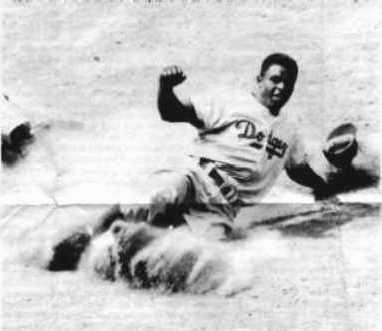
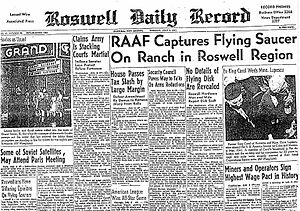
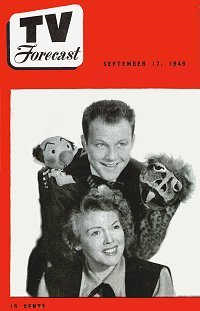
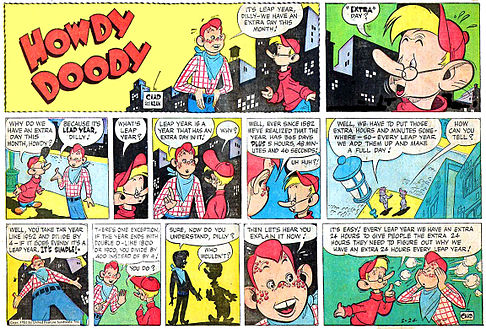
Pingback: The Undercover King Of Contact: Jack Kirby – ZeroKnight